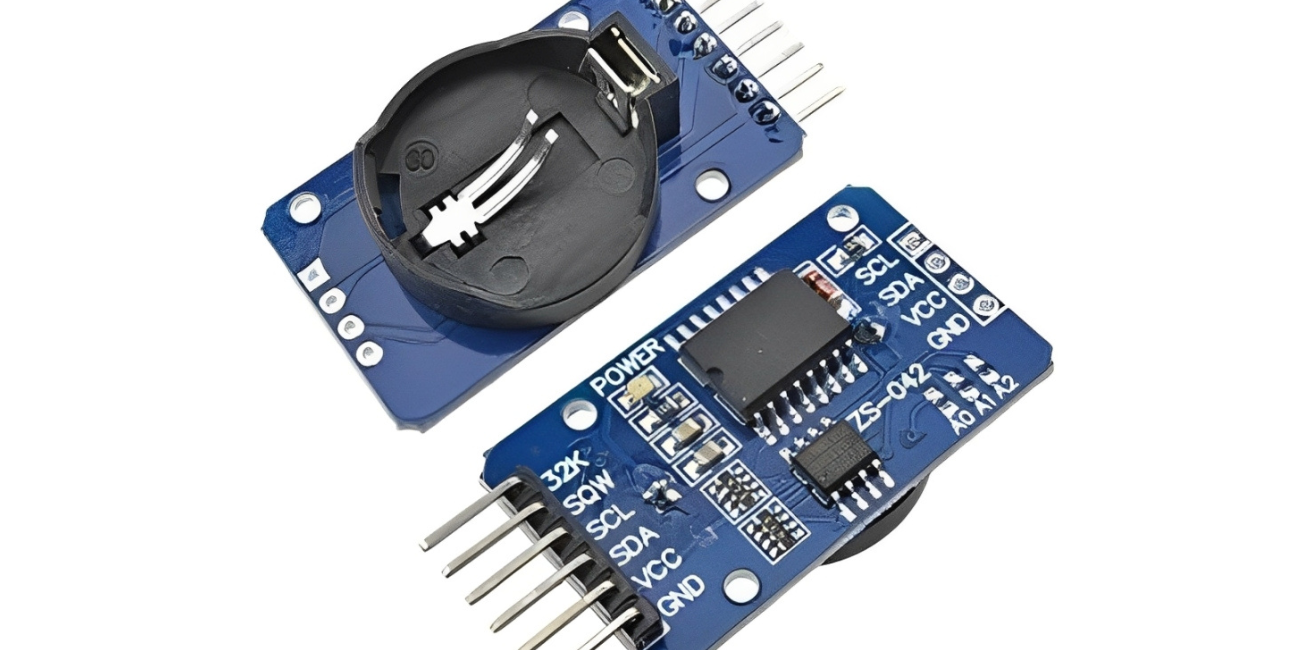
DSM Online Support
Support Master
Welcome to DSM Online
How can I help you today
How can we assist you? please let us know the support you need from DSM Online

Sure, I can help you with that! Here's a blog post about the DS3231 RTC Module, designed to be SEO-friendly, plagiarism-free, and AI-free, aiming for around 700 words.
In the world of electronics and embedded systems, accurate timekeeping is not just a convenience, it's a necessity. From data logging and scheduling to critical industrial applications, reliable time information is paramount. This is where the DS3231 RTC Module shines, offering unparalleled precision and robust features. And the best part? You can harness its power and the integrated AT24C32 EEPROM even without a dedicated battery cell.
Many Real-Time Clock (RTC) modules are available, but the DS3231 consistently earns its reputation as a top performer. Unlike simpler RTCs that rely on external crystal oscillators susceptible to temperature fluctuations, the DS3231 boasts an integrated temperature-compensated crystal oscillator (TCXO). This built-in intelligence means it actively monitors ambient temperature and adjusts its internal oscillator to maintain exceptional accuracy. We're talking about deviations of just a few parts per million (ppm) across a wide temperature range – far superior to typical RTCs that can drift by minutes per month.
This superior accuracy makes the DS3231 ideal for applications where even slight timing errors can have significant consequences. Think about synchronized data acquisition, precise control systems, or long-term data logging where every timestamp needs to be spot-on.
Most DS3231 modules you'll encounter come with an additional component: the AT24C32 EEPROM. This 32-kilobit (4KB) Electrically Erasable Programmable Read-Only Memory chip is a valuable addition, providing non-volatile storage right on the same I2C bus.
What does this mean for your projects? Imagine needing to store configuration settings, calibration data, or even small snippets of logged information that persist even when the main power is off. The AT24C32 makes this incredibly convenient. You can use the DS3231 for precise timekeeping and the AT24C32 for complementary data storage, all communicating seamlessly with your microcontroller via the simple I2C interface. This integrated approach simplifies wiring and reduces overall component count, making your designs cleaner and more efficient.
One of the most intriguing aspects of the DS3231 RTC module is its ability to operate effectively without a coin cell battery for certain applications. While the module is designed with a battery input for continuous timekeeping during power outages (a crucial feature for many), its low power consumption and internal mechanisms allow for scenarios where a battery might not be strictly necessary.
How is this possible? The DS3231 draws minimal current, especially in standby mode. If your application can tolerate a brief reset of the time upon power-up, or if you have a reliable way to set the time from an external source (like an internet connection with NTP servers or a GPS module) each time your device powers on, then the battery can be omitted. This approach offers several benefits:
Cost Reduction: Eliminating the need for a coin cell battery reduces the overall bill of materials for your project.
Environmental Friendliness: Less reliance on disposable batteries contributes to a more sustainable design.
Maintenance Free: No battery to replace means reduced maintenance over the lifespan of your device.
Of course, if uninterrupted timekeeping is absolutely critical, even during power failures, then incorporating a CR2032 coin cell is highly recommended. The DS3231 is incredibly efficient, allowing a single coin cell to power it for years.
The DS3231 and AT24C32 both communicate using the widely adopted I2C (Inter-Integrated Circuit) protocol. This two-wire serial bus (SDA for data, SCL for clock) is incredibly efficient and allows multiple devices to share the same bus. Most microcontrollers, including popular platforms like Arduino and Raspberry Pi, have built-in hardware support for I2C, making integration straightforward.
Numerous libraries are available for various programming environments that simplify reading and writing time data to the DS3231 and storing/retrieving data from the AT24C32. This ease of use dramatically reduces development time, allowing you to focus on your application's core functionality. The DS3231 RTC module's I2C address is typically 0x68, while the AT24C32 EEPROM's address is often 0x57. These are standard addresses you'll use in your code.
The versatility and accuracy of the DS3231 RTC module make it a go-to component for a vast array of projects:
Data Loggers: Accurately timestamp sensor readings for environmental monitoring, industrial processes, or scientific experiments.
Automated Systems: Schedule events, trigger actions, or control devices at precise times, crucial for smart home automation, irrigation systems, or manufacturing.
Digital Clocks and Displays: Build highly accurate clocks, alarm systems, or countdown timers.
IoT Devices: Provide reliable time synchronization for connected devices, ensuring data consistency and proper event sequencing.
Power Management: Implement power-saving modes by scheduling device wake-ups or shutdowns at specific intervals.
The DS3231 RTC Module with its integrated AT24C32 EEPROM offers a compelling combination of extreme accuracy, robust features, and ease of use. Whether you prioritize uninterrupted timekeeping with a battery backup or explore a more sustainable, battery-free approach with external time synchronization, this module provides a reliable foundation for your embedded projects. Its precision and integrated data storage capability truly set it apart, making it an excellent investment for anyone serious about time-critical applications. Embrace the precision and unlock new possibilities in your designs with the DS3231.